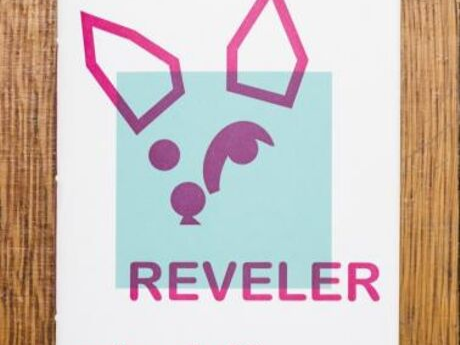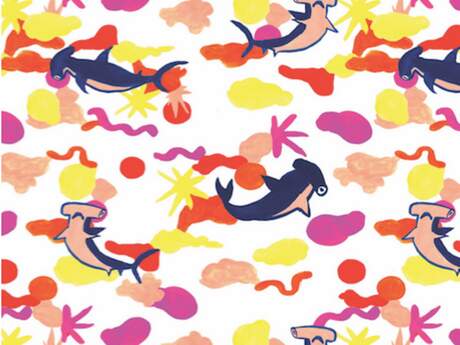Q & A: Chapbook Publishers
Iris Cushing & Elizabeth Clark Wessel on Argos Books

Iris Cushing is the author of Wyoming, winner of the 2013 Furniture Press Poetry Prize, forthcoming this summer. She lives in New York and is an editor at Argos Books and Circumference: Poetry in Translation.
Elizabeth Clark Wessel is an editor at Argos Books and Circumference: Poetry in Translation and the author of the chapbook Whither Weather (GreenTower Press). Her poems and translations have appeared in DIAGRAM, A Public Space, Guernica, Sixth Finch, Lana Turner Journal, The Laurel Review, and elsewhere. She lives in Brooklyn, NY and works as a freelance translator.
* * *
What is your own personal history with chapbooks? How did they first catch your interest?
Iris: I learned about chapbooks in high school, and was instantly taken with their DIY nature. When I was 17 or 18, my idea of a great Saturday night was hanging out at the 24-hour Kinko's, photocopying, collating and stapling little 'zines of my poems and collages to give to my friends. I so loved the process of physically making little books, using my own poems, that people could read in more or less the same way that they read "real" books. There is a sort of sovereignty to the chapbook that doesn't exist anywhere else—to me, it has always been an autonomous zone, created below the radar of the legitimate "Book," and that sovereignty has an effect on how the content is received. Its authority comes from somewhere other than where we would expect.
Liz: My mother is a poet; I remember that she had a few impossibly beautiful chapbooks around the house when I was child, and at some point she made one of her own using a local printer. They fascinated me, but then again so did all book objects. However, I kind of forgot about the whole concept of the chapbook for 20 years. In my late 20s, as I started to get to know poets my age, chapbooks arrived in my life again in a big way: full of work that I found exciting and in a form that was both approachable and beautiful.
What made you first decide to start publishing chapbooks?
Iris: Making things is wonderful—the experience of craftsmanship, trial and error, sensual engagement. When Liz and Emily (E.C. Belli) and I got together in grad school and decided to start a press, the idea of making chapbooks was hugely appealing to me. I was drawn to the lightness of the publishing part of it, that it would be something we'd do on our own and have total freedom with. The process of making a chapbook is just complex enough to be really fun.
Liz: Chapbooks also just seemed like the perfect answer to the problem of not having a lot of money to put towards publishing books. Plus I loved the social aspect of it. It was something I could do together with my dear friends and my husband (who designs many of our books and helps with all aspects of production). Everything about the process and the form seemed friendly and inspiring.
Could you talk a little bit about your own process of making and publishing chapbooks?
Liz: First we design the chapbooks on the computer. (Thank you desktop publishing revolution!) We make sure that all of the materials we use are of good quality, acid free, nice to touch, and not terrible for the environment when possible. We do a lot of the printing ourselves (guts on our laser printer, some of the covers on our inkjet printer).
Iris: We also letterpress some of our covers at The Arm in Williamsburg. We have a small studio in Brooklyn, with a large kitchen table in the center, which is where we assemble the books. Chapbook sewing is always a jolly good time. We fold, awl and sew the bindings, then trim the face of the book on a paper guillotine. I often thread needles, which I happen to be good at. Our wonderful intern, Grayson Wolf, often helps out, as well as Mårten Wessel (Liz's husband) and the chapbook's author.
What is unique about the chapbook form, or why chapbooks and not book-books?
Liz: I think that the limitations of the chapbook form–the fact that it's difficult to make them longer than 25-30 pages, that you can't distribute them through normal distribution channels, etc.–are also its strengths. In the poetry world right now the 70 page manuscript has a real hold on our imaginations. Chapbooks offer some respite from that. They allow other kinds of projects to come into being. Also, because they are relatively cheap to make, they democratize publishing. I think they invite experimentation.
Iris: As a reading experience, chapbooks are very approachable. If you have a short attention span, it's very inviting to read a book that you can finish in half an hour; if the book is good, you'll want to read it multiple times, on multiple occasions, study it backwards and forwards. The experience can kind of "prime the pump," provide an entry-point into reading something longer, or provide an introduction to an author. Those are distinct qualities I love about chapbooks.
Do you have recent favorite chapbook from another press?
Iris: I got a bunch of chapbooks from Trafficker Press at AWP, and have been blown away by both the brilliance of the work and the elegance of the books themselves. The Quarry by Miranda Mellis, with images by Megan Vossler, stands out as an especially rich, gorgeously wrought book. It's aesthetically simple upon first glance, but the relationship between the images and the text is nuanced in such a delicious way.
Liz: Lately, I'm very excited about how the chapbook is being used by fiction and non-fiction publishers. Two stellar examples are Toilet Bowl by Kate Zambreno (Guillotine) & List by Deb Olin Unferth (New Herring Press).

